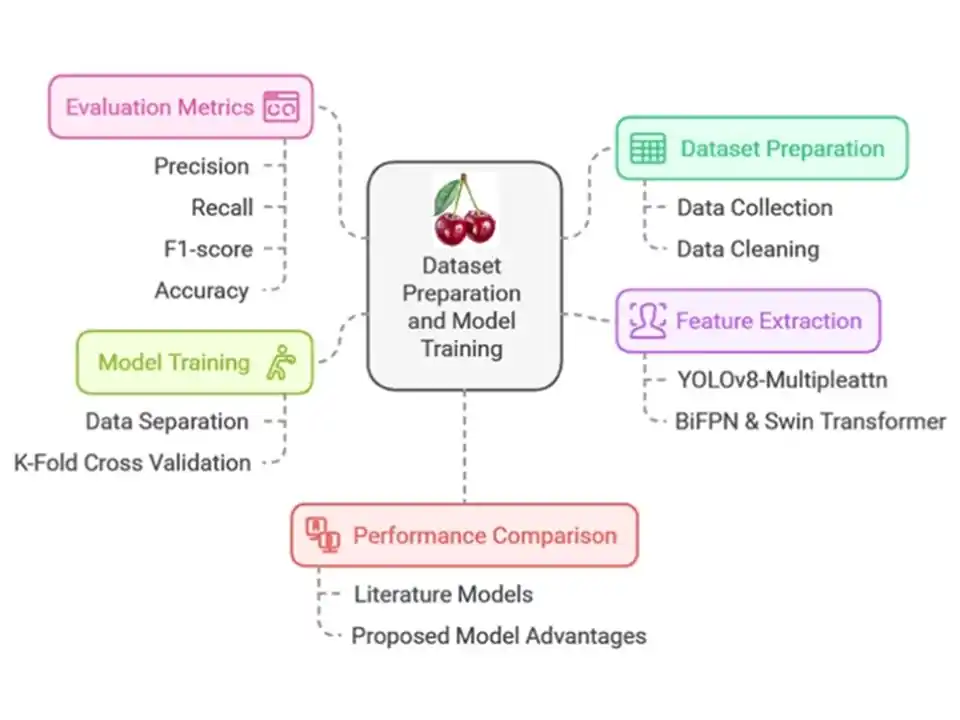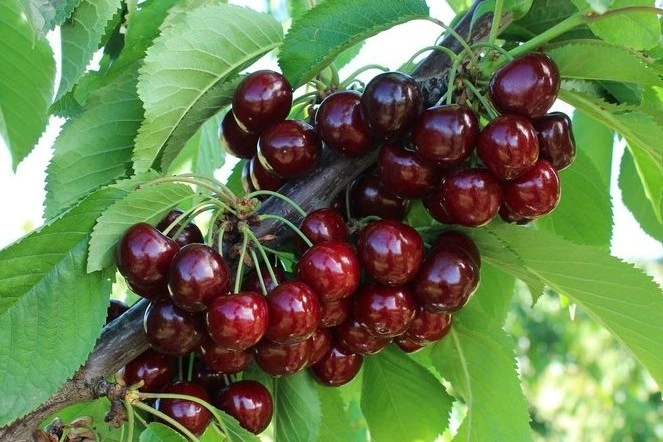To reduce the production and marketing costs of cherry production, it is necessary to find accurate and rapid classification methods.
Traditional classification methods are frequently prone to errors, require specialized knowledge, and consume a significant amount of time.
In a study published in Nature's "Scientific Reports," researchers from Burdur Mehmet Akif Ersoy University in Turkey present the results of a study aimed at improving the accuracy of cherry classification through the integration of advanced deep learning and image processing techniques, tools that are offering significant advantages in terms of efficiency and fruit quality control.
In this study, the YOLOv8 model was improved in the detection and classification of various cherry cultivars thanks to the addition of Swin Transformer and Deformable Attention Transformer.
Classification and AI techniques
This approach improves the efficiency and accuracy of cherry production and marketing processes, strengthens the role of artificial intelligence in agricultural technologies, and is expected to enhance the sector's competitive advantage.
Studying the scientific literature, studies on cherry classification focus on the classification of cherries that have already been harvested and are leafless.
However, it is necessary for farmers to accurately identify the type of fruit while it is still on the tree, rather than after harvesting, to optimize the harvesting stages, ensure the classification of fruits in line with market demands, improve quality control, and facilitate better export strategies.
Consequently, this investigation stands out from existing studies by focusing on the identification of cherries while they are still on the tree, a task that has been little studied in the current body of research.
 Figure 1. Overall operational flow of the proposed framework. Source: Arısoy and Uysal, 2025
Figure 1. Overall operational flow of the proposed framework. Source: Arısoy and Uysal, 2025
Dataset and results
Stella, Regina, Rainer, White Cherry, and Ziraat 900 composed the dataset used in this investigation.
The results indicate that the cherry varieties were successfully classified using deep learning and image processing techniques.
When the 4 models of the study are compared with each other, in the proposed Yolov8n-Multipleattn model, in particular, the precision for the "Regina" class increased to 87%, reflecting a better ability to correctly identify cases of this class.
Similarly, the "Star" class achieves an improved F1 score of 0.93, supported by balanced precision and recall (both at 93%) and a higher accuracy of 92.50%.
Performance and future outlook
This demonstrates greater consistency in recognizing cases of this class.
Moreover, the "Rainier" and "White Cherry" classes maintain their high performance, with the "White Cherry" class achieving nearly perfect metrics (F1 score: 0.99, accuracy: 100%).
However, to further improve the model's performance, it is advisable to use both larger and more diverse datasets, ensuring that the data is collected from a variety of geographical regions.
This will improve the model's generalization capabilities.
Moreover, the integration of the model into mobile platforms, including drones and wearable devices, could lead to the development of real-time applications, which would enhance the effectiveness of agricultural processes.
Thanks to these encouraging results, we can expect improvements in quality control and efficiency in agriculture, which can also be applied to the classification of other types of fruit.
Source: Varol Arısoy, M., Uysal, İ. BiFPN-enhanced SwinDAT-based cherry variety classification with YOLOv8. Sci Rep 15, 5427 (2025). https://doi.org/10.1038/s41598-025-89624-7
Opening image source: SL Fruit Service
Melissa Venturi
University fo Bologna (ITA)
Cherry Times - All rights reserved













